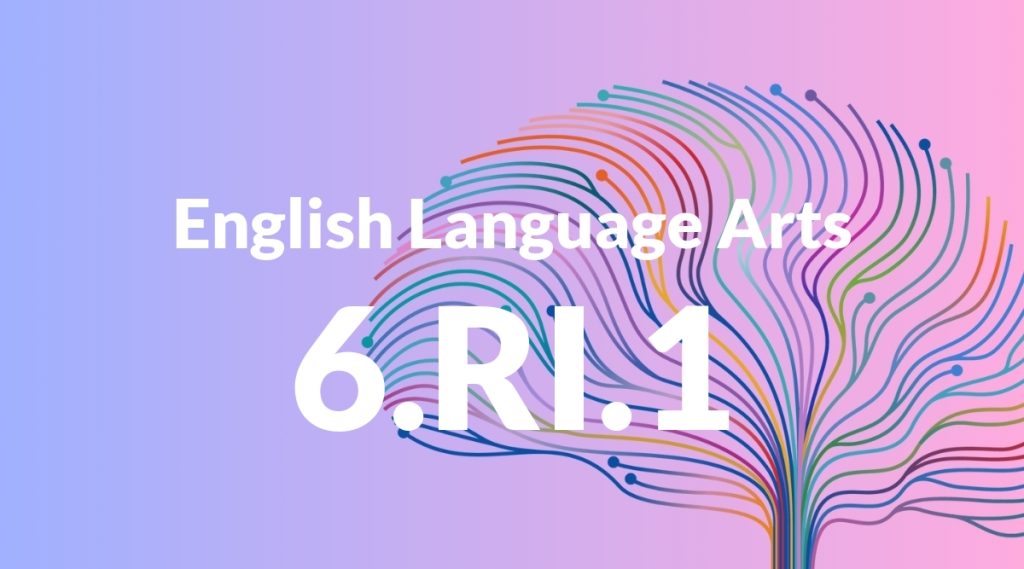Standard: 6.RI.1 – Cite textual evidence to support analysis of what the text says explicitly as well as inferences drawn from the text.
Grade level: Grade 6
Subject: English Language Arts
Domain: Reading: Informational Text
Teacher Overview
This standard focuses on developing students’ ability to cite textual evidence to support their analysis of informational texts. This skill is crucial for understanding and interpreting non-fiction, which is a key component of the English Language Arts curriculum in Grade 6. Mastery of this standard will enable students to engage critically with texts and form well-supported conclusions. Students should know how to identify main ideas and supporting details in a text. They should also be comfortable making simple inferences and distinguishing between explicit and implicit information.
After mastering this standard, students will be able to critically evaluate sources, synthesize information from multiple texts, and construct well-supported arguments in both written and oral forms.
Common Misconception 1
Some students may think that citing textual evidence only involves quoting directly from the text. This is incorrect because citing evidence also includes paraphrasing and summarizing key points, as well as interpreting and integrating evidence into their own analysis.
Intervention 1
Use guided practice to show students how to paraphrase and summarize information from the text. Provide exercises that require them to explain the significance of their evidence in their own words.
Common Misconception 2
Another common misconception is that inferences are just guesses without needing support from the text. This is incorrect because valid inferences are based on specific details and evidence from the text.
Intervention 2
Provide examples of valid inferences and the textual evidence that supports them. Use think-aloud strategies to model the process of drawing inferences based on text details.
Prerequisite Knowledge
Students should have a basic understanding of identifying main ideas and details in a text. They should also be familiar with making simple inferences and distinguishing between explicit and implicit information.
Subsequent Knowledge
Students will develop the ability to critically evaluate sources, synthesize information from multiple texts, and construct well-supported arguments in both written and oral forms.
Instructional Activities
- Close reading exercises with annotation
- Group discussions analyzing text evidence
- Writing essays with cited textual evidence
- Creating graphic organizers to map evidence
- Role-playing debates using text support




